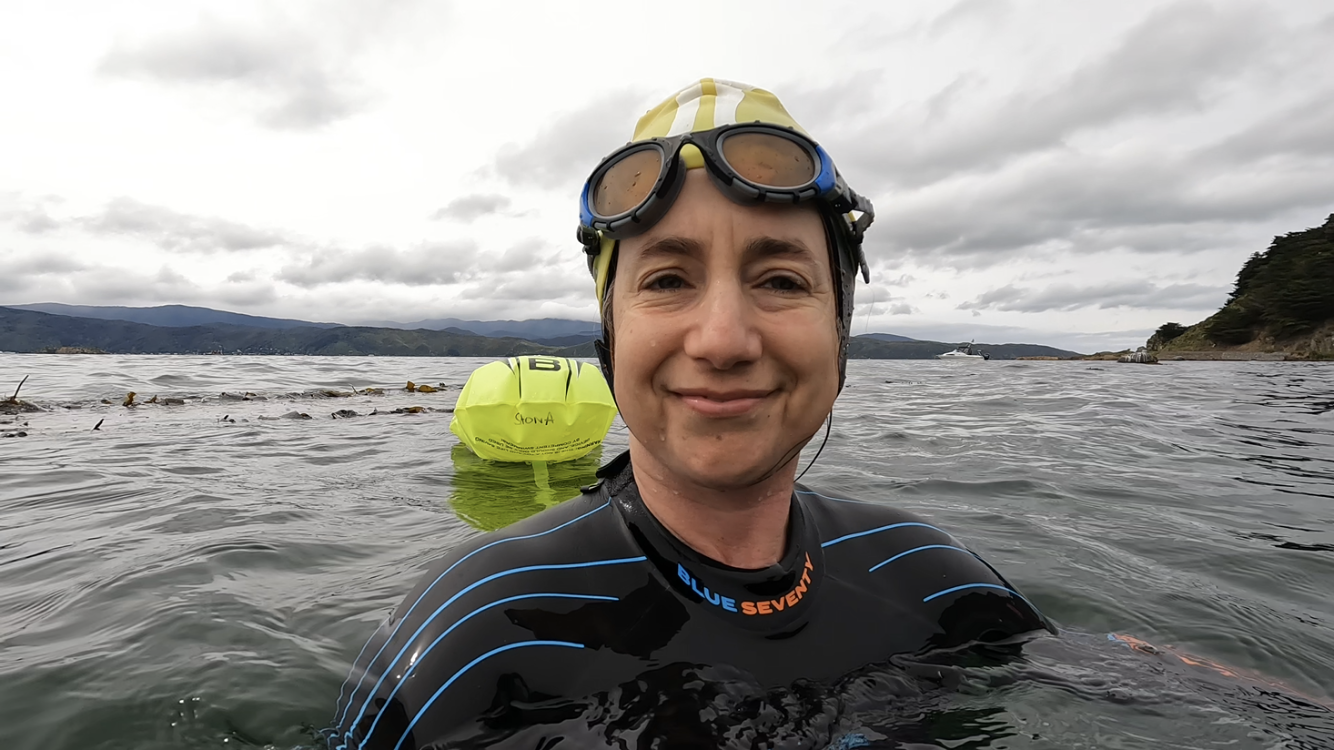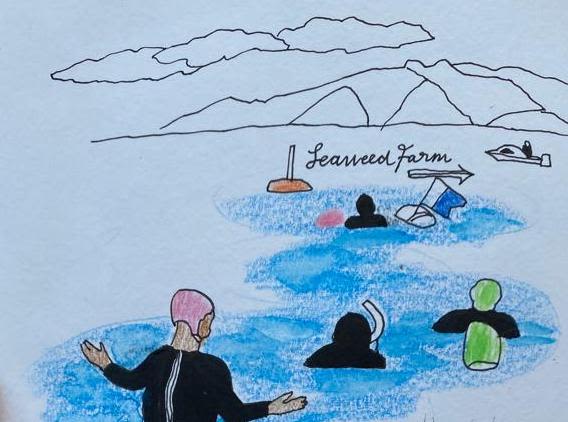A little kelp from
my friends
A group of wild swimmers visited a seaweed farm and restoration site in Te Whanganui-a-Tara, and were amazed by the power of algae.
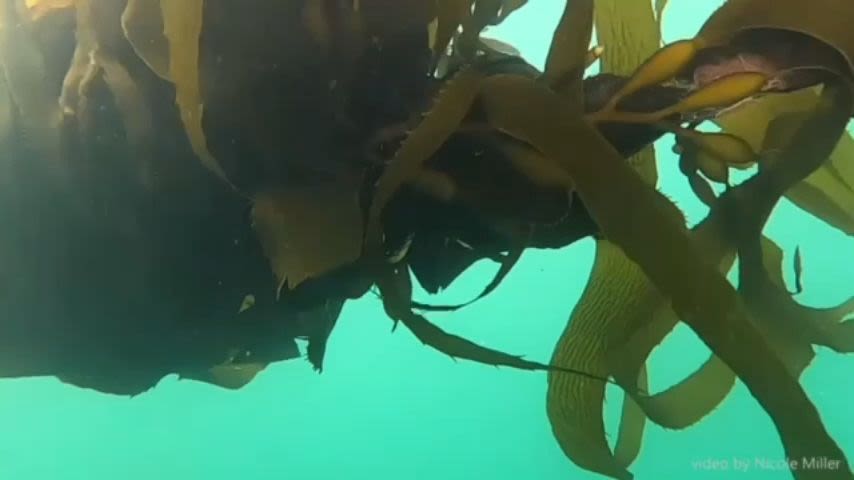
"Sea grapes are like a vegan caviar," Nicole Miller tells us.
I'm perched with the rest of my swim group in a little cove at Kau Bay Point, on the northern tip of Te Motu Kairangi (Miramar Peninsula) in Wellington. It's an average spring day: the sky is graphite grey, there's a mild southeasterly, and the sea is cloudy. The shoreline is sprinkled with dried seaweed delivered by a sighing tide.
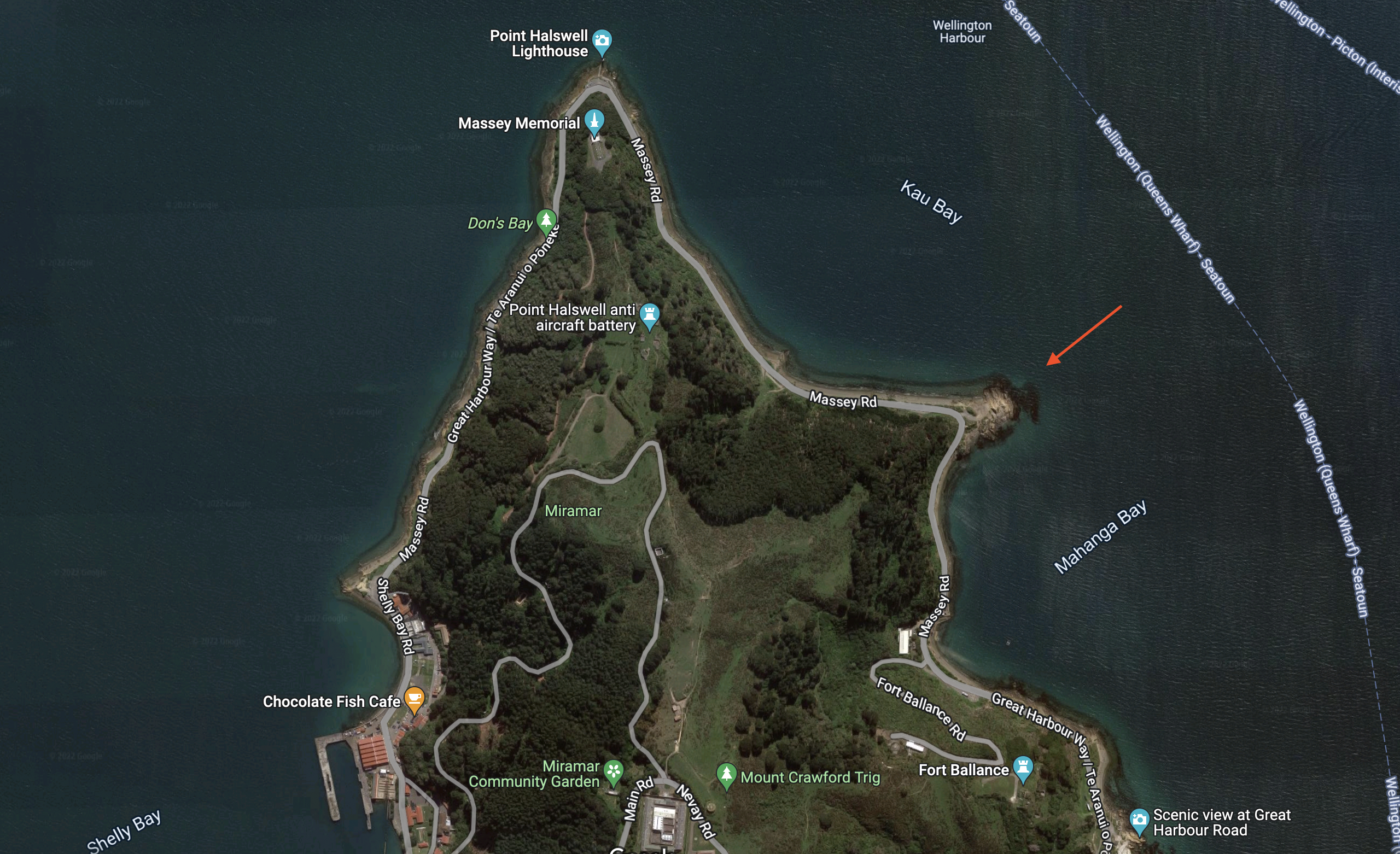
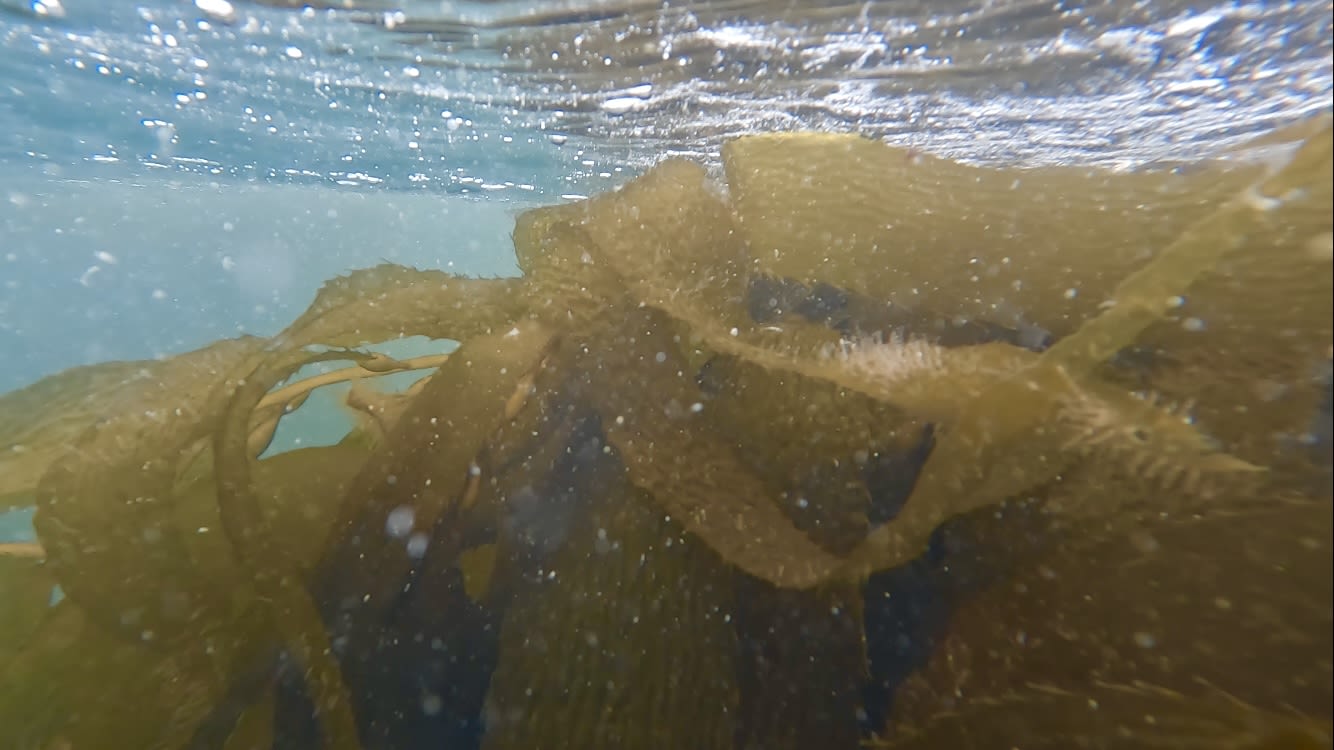
My swim group is called Wāhine Wai (Women of the Water). Every Sunday we meet at a tiny cove near Scorching Bay on the peninsula and swim together – including during winter, when the sea temperature sometimes dips below 10°C. Until today, we haven't swum together at Kau Bay Point and the swaying underwater forest beckons.
There's a sense of anticipation as everyone arrives, lugging baskets and buckets filled with swim gear and thermoses.
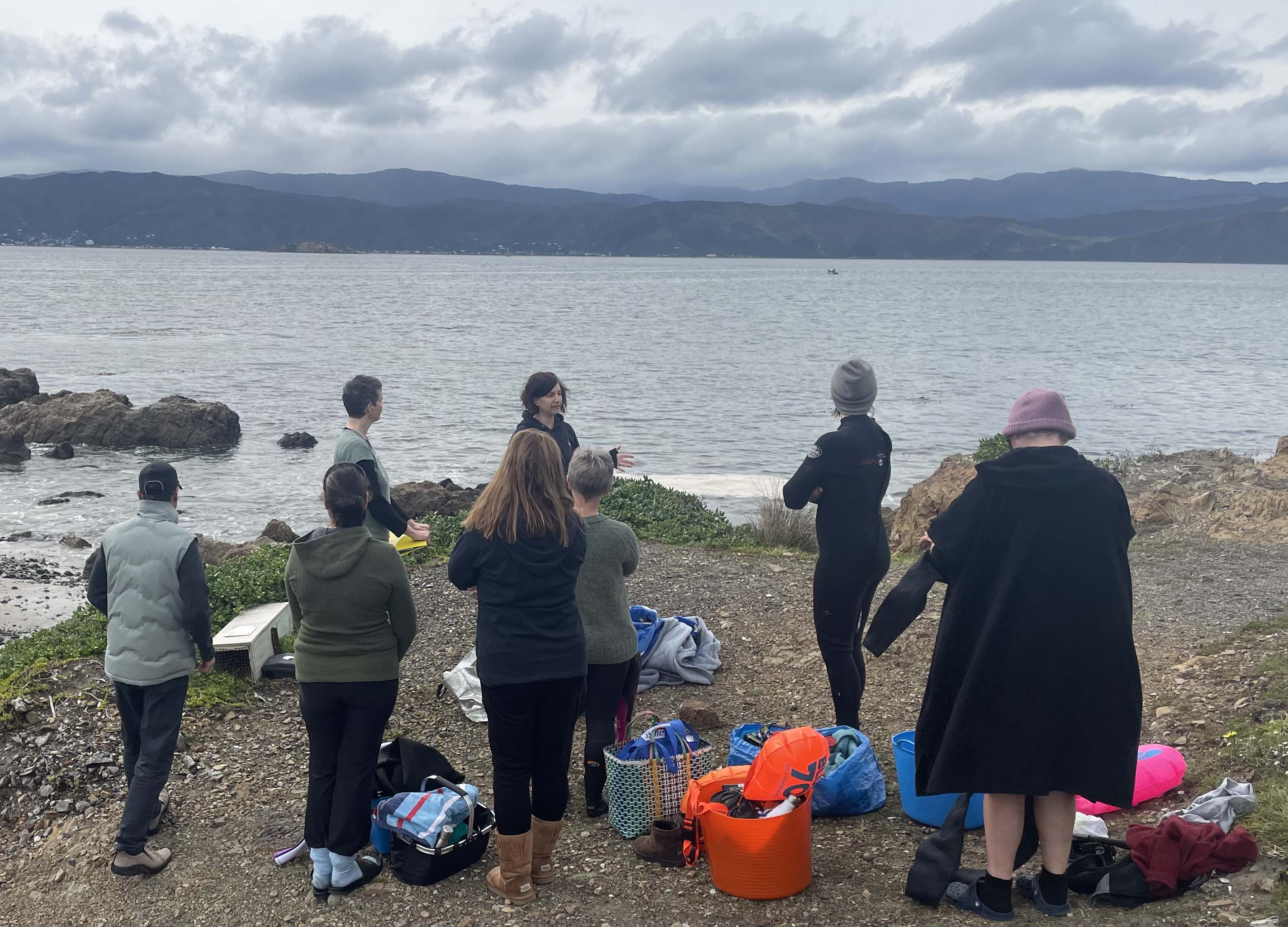

Our guest speaker is Dr Nicole Miller, an underwater expert (she's Chair of the Friends of Taputeranga Marine Reserve and President of the Wellington Underwater Club) who has come to talk to us about the magnificent marine life in our harbour, the myriad threats it faces, and a seaweed restoration project called Love Rimurimu.
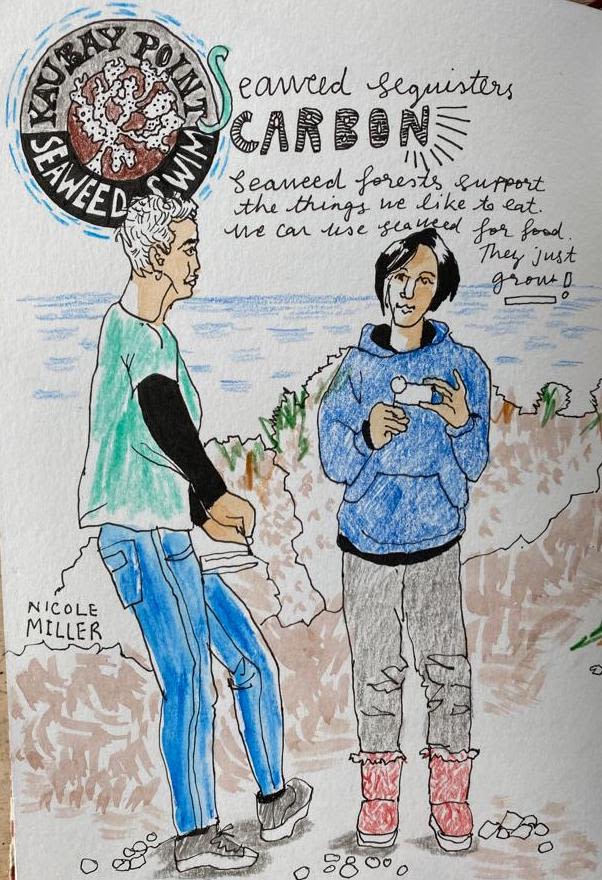

"We have a lot of diverse marine habitats in Wellington Harbour, including seaweed forests."
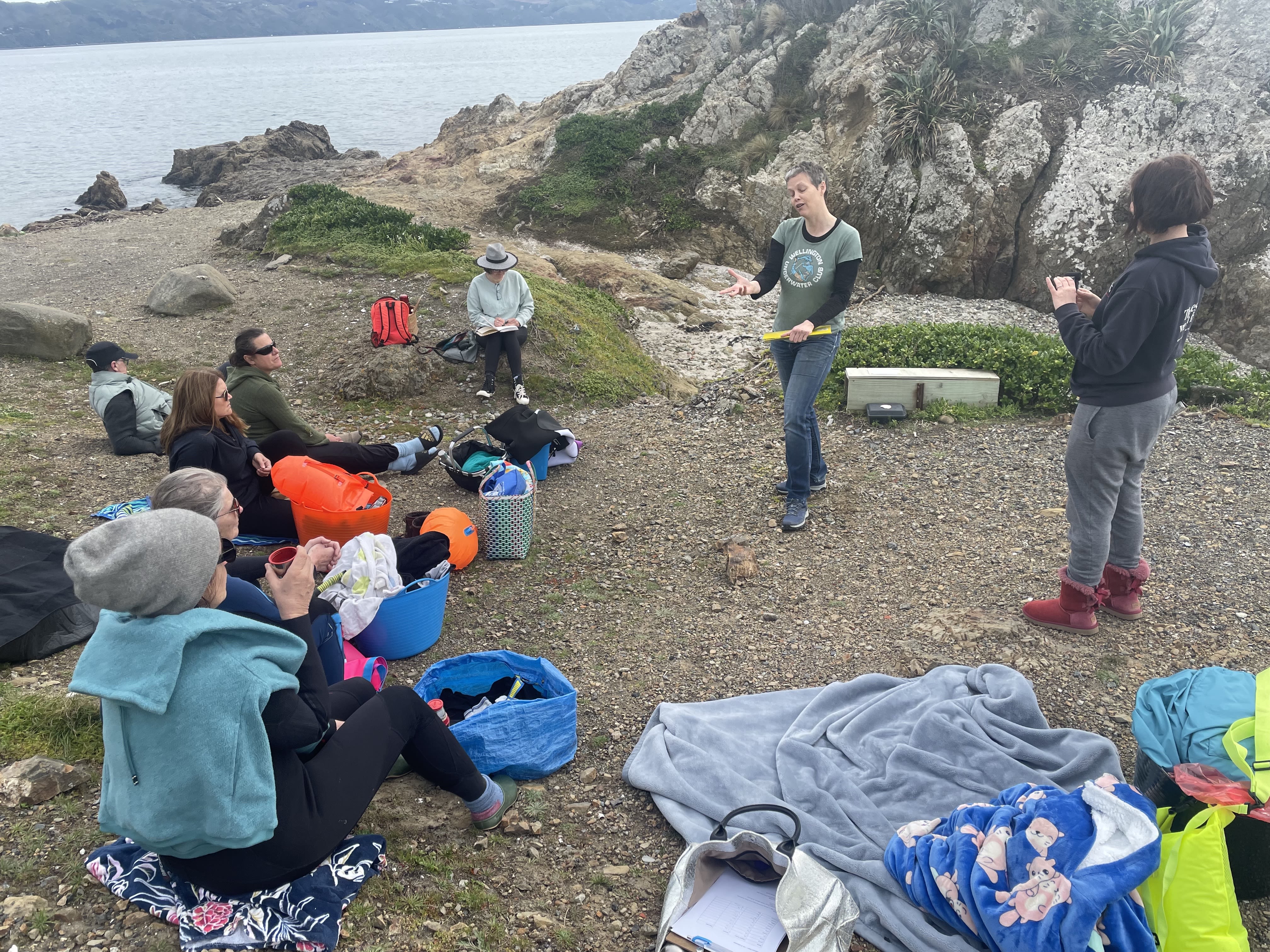
Seaweed (n.): large algae growing in the sea or on rocks below the high-water mark.
(Māori: rimurimu)
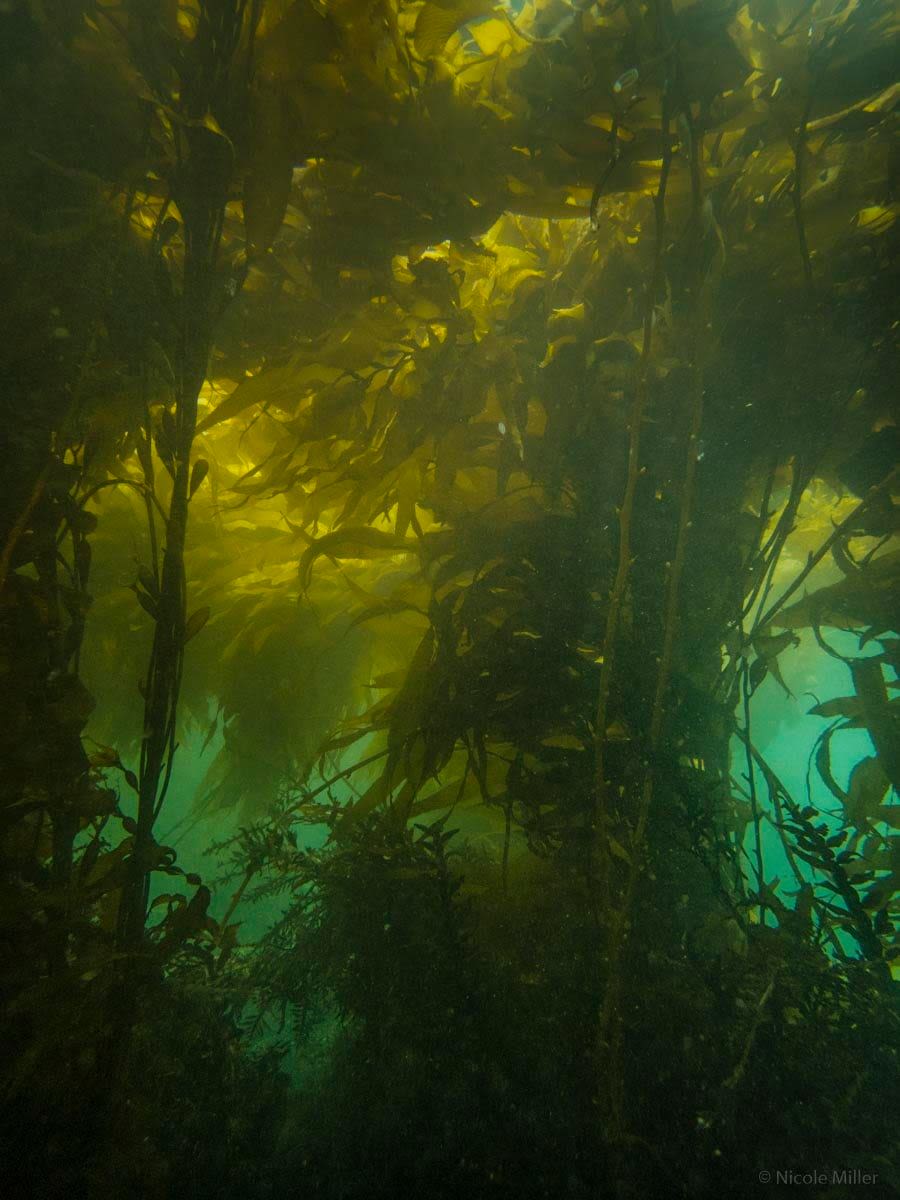
Unlike plants, seaweeds don't have roots. Instead, they have a holdfast (attachment) that anchors them to a surface such as a rock. They also have leaf-like structures called blades that absorb minerals and gases from sea water.

Nicole describes our rich underwater forests:
"It's like a canopy, where you've got the massive seaweeds on the top and then underneath you've got the smaller ones.
"And if you go through the underwater forest when you're diving or snorkelling or swimming, you see all the little fish hanging out, you see sea slugs, you see crabs coming up.
"There's often starfish in there, and lots of sponges and other things right in the holdfast of the seaweed."
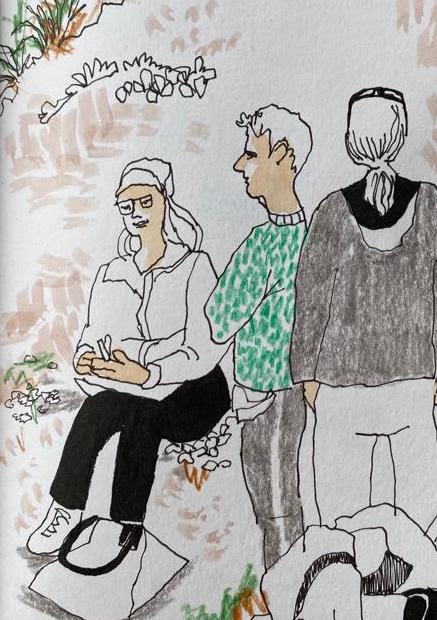
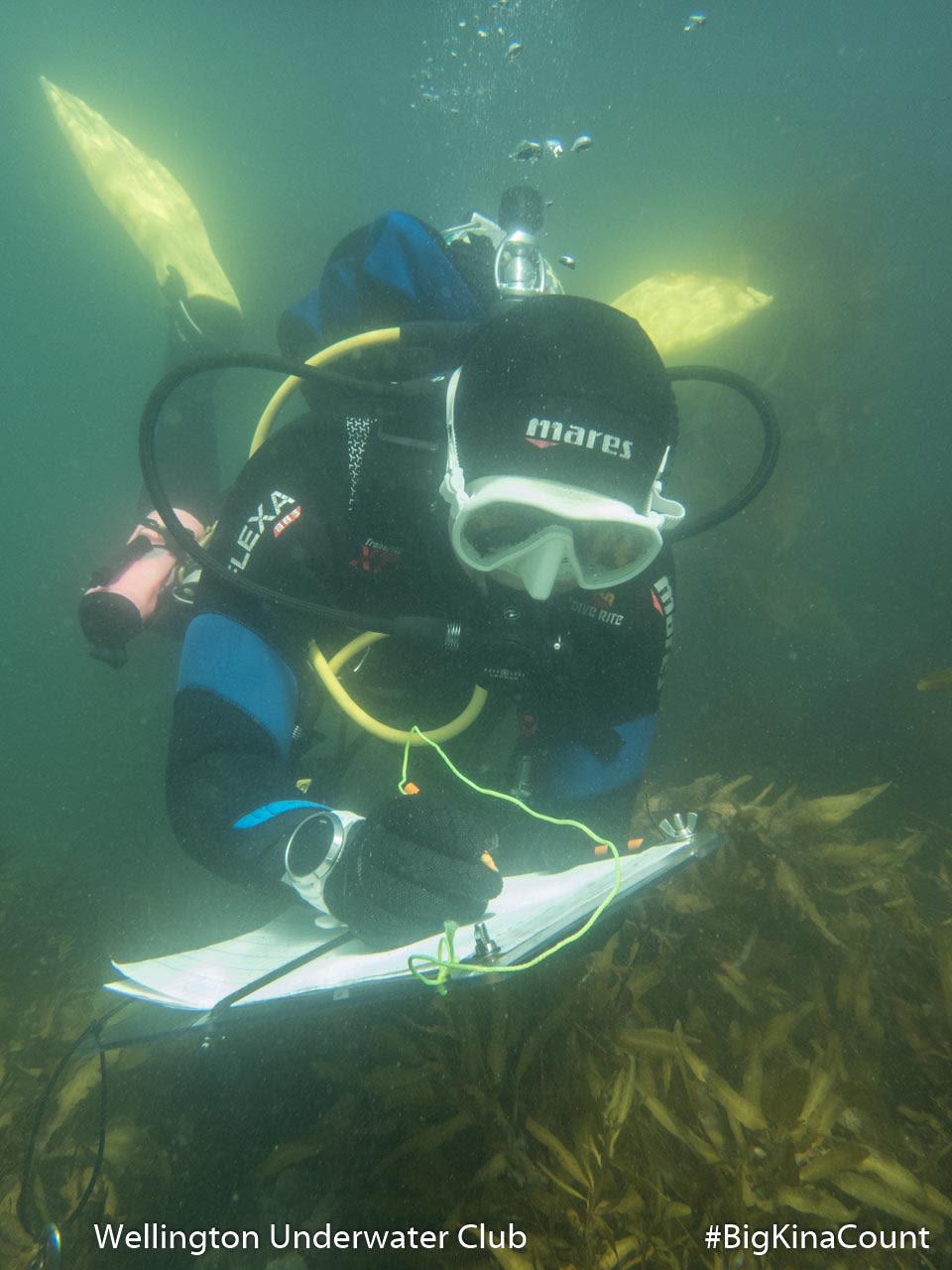
"It creates this super diverse habitat and is often quite colourful as well. And Wellington has a huge diversity of seaweeds. For example, this giant kelp that we see floating on the surface, [Wellington is] the northernmost boundary of it. We don't get it much further up the coast and what that also means is it's at a point where you can see it fluctuating quite a lot depending on water temperature.
"So what we've been doing with the Wellington Underwater Club is we've been monitoring giant kelp right at this spot since 2016."

Watch some of Nicole's talk:

Fun facts about giant kelp (macrocystis pyrifera, rimu kakauroa)
Wellington is the northernmost limit for giant kelp in Aotearoa.
In favourable conditions it can grow up to 60cm per day and reach heights of up to 50 metres (that's even taller than Tāne Mahuta, Northland's giant kauri tree).
It releases oxygen in the form of bubbles rising to the surface. It also absorbs carbon, just like the trees in our land forests.
Kelp forests provide food and shelter for other marine life and protect our coastlines from erosion.
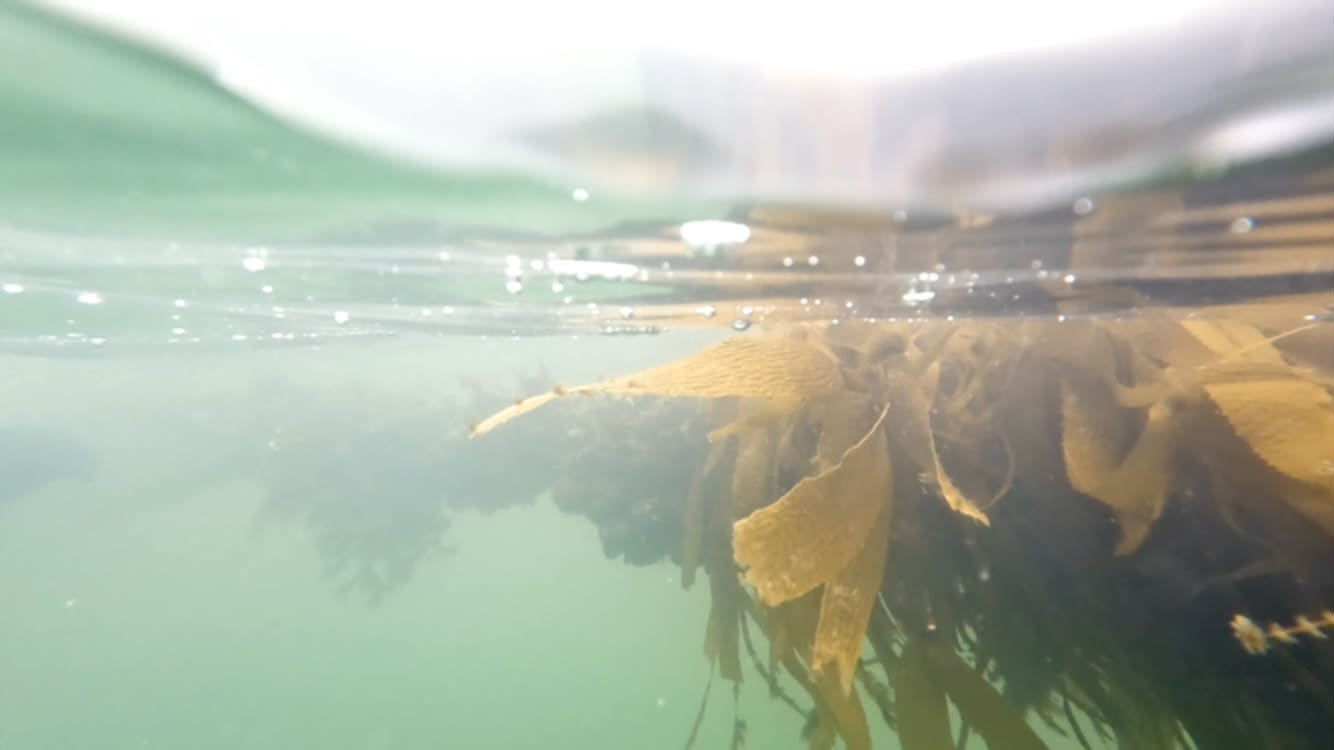
After Nicole's talk, we got ready to swim.
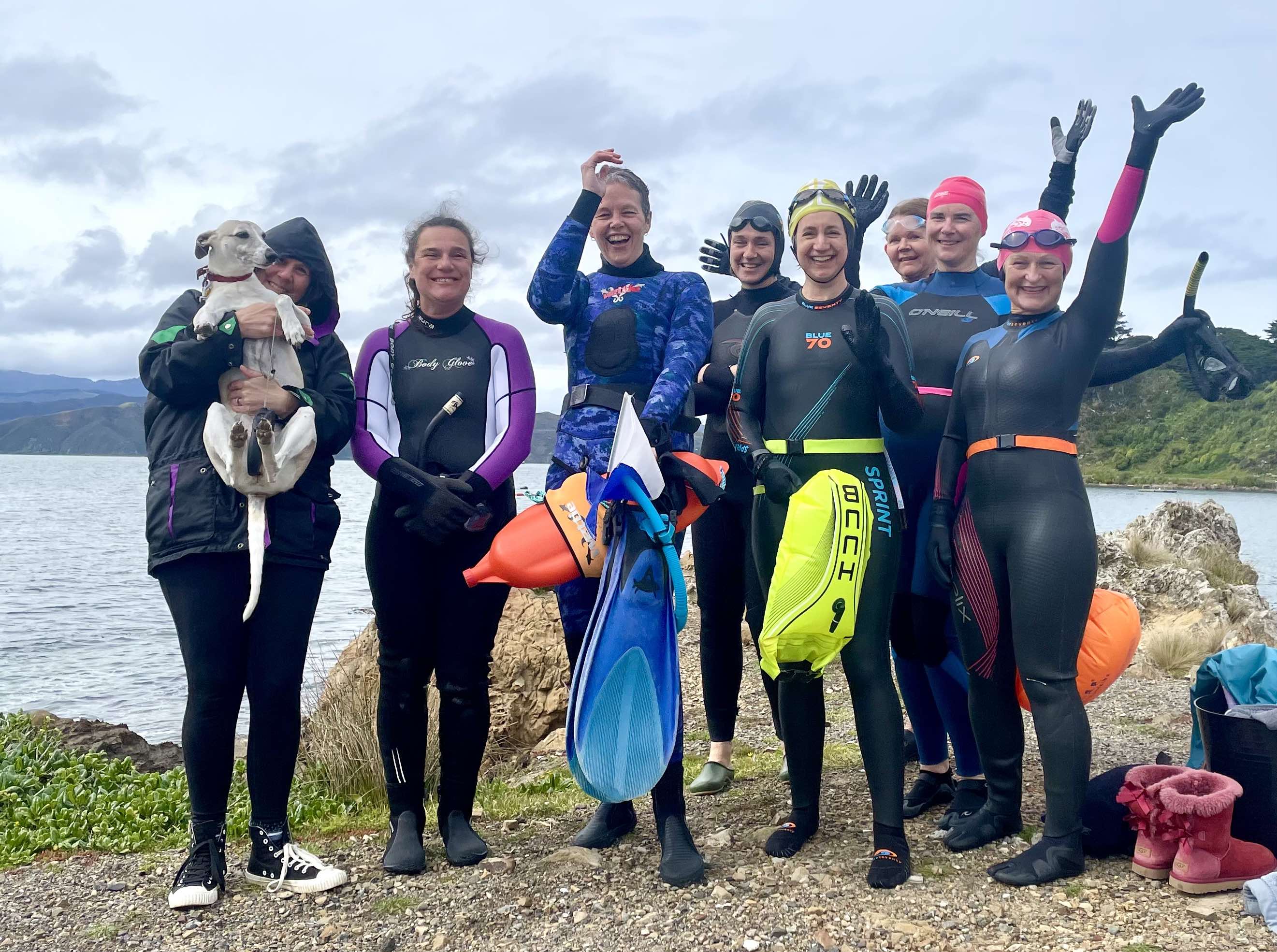
The sea temperature was about 13°C and the water was a bit churned up from some recent boisterous weather.
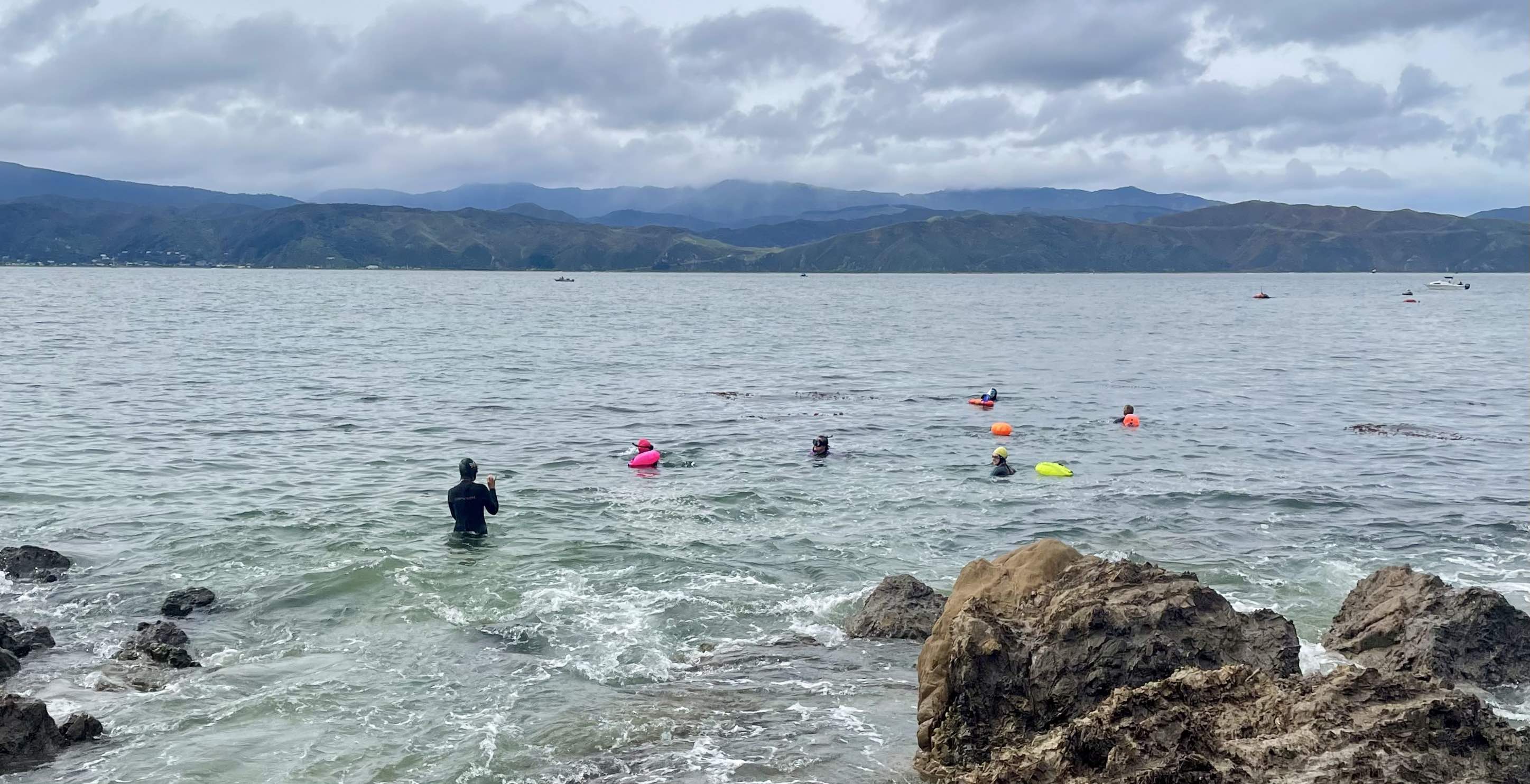
We swam out 100 metres to visit the seaweed growing at a farm near Māhanga Bay, on ropes suspended between two buoys. The farm belongs to Māhanga Bay Seaweed and alongside it is a pilot site for Love Rimurimu, who are working to regenerate declining seaweed forests.
Love Rimurimu has been growing 'baby' kelp in a laboratory from seaweed spores and will be slowly transferring the young rimurimu into different sites in the harbour over a period of time. They will monitor its growth to learn the optimum conditions for growing giant kelp in Wellington.
The 'teenage' kelp are growing fast!
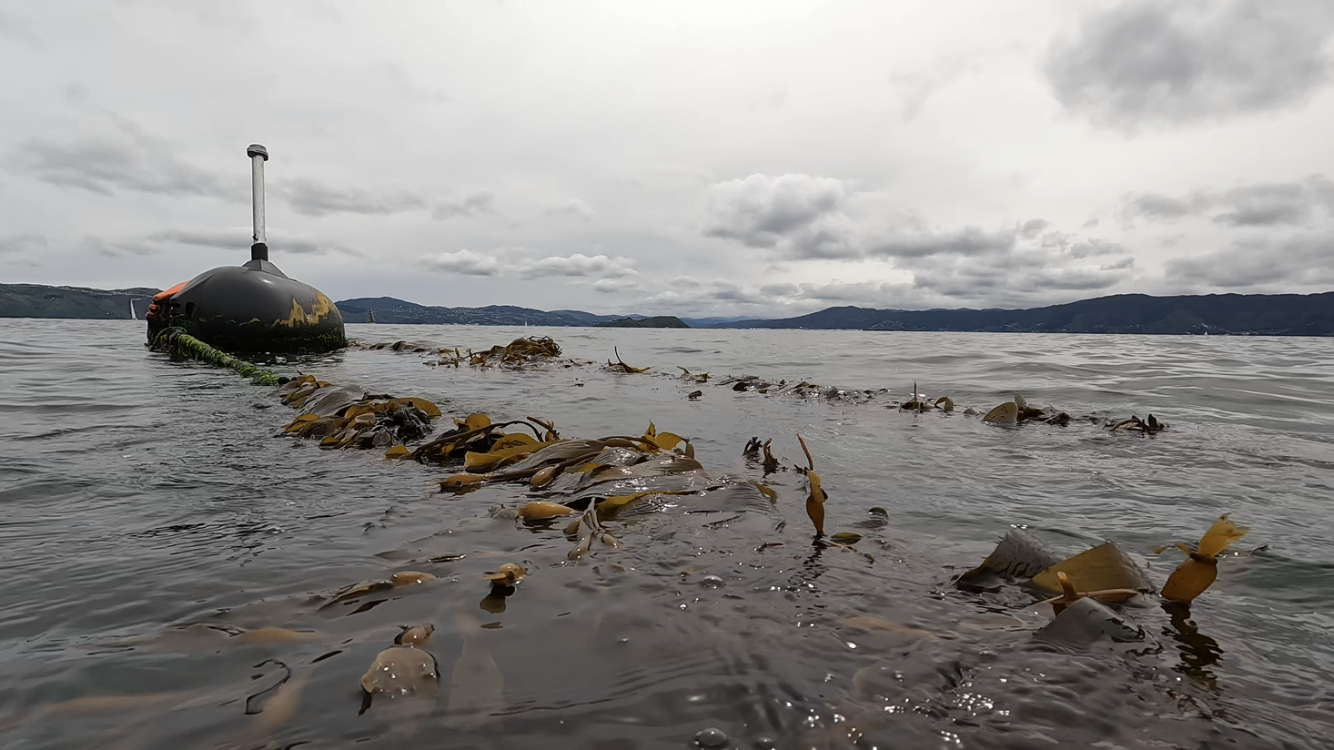
This is how the rimurimu looks on the surface, but here's what lies beneath...


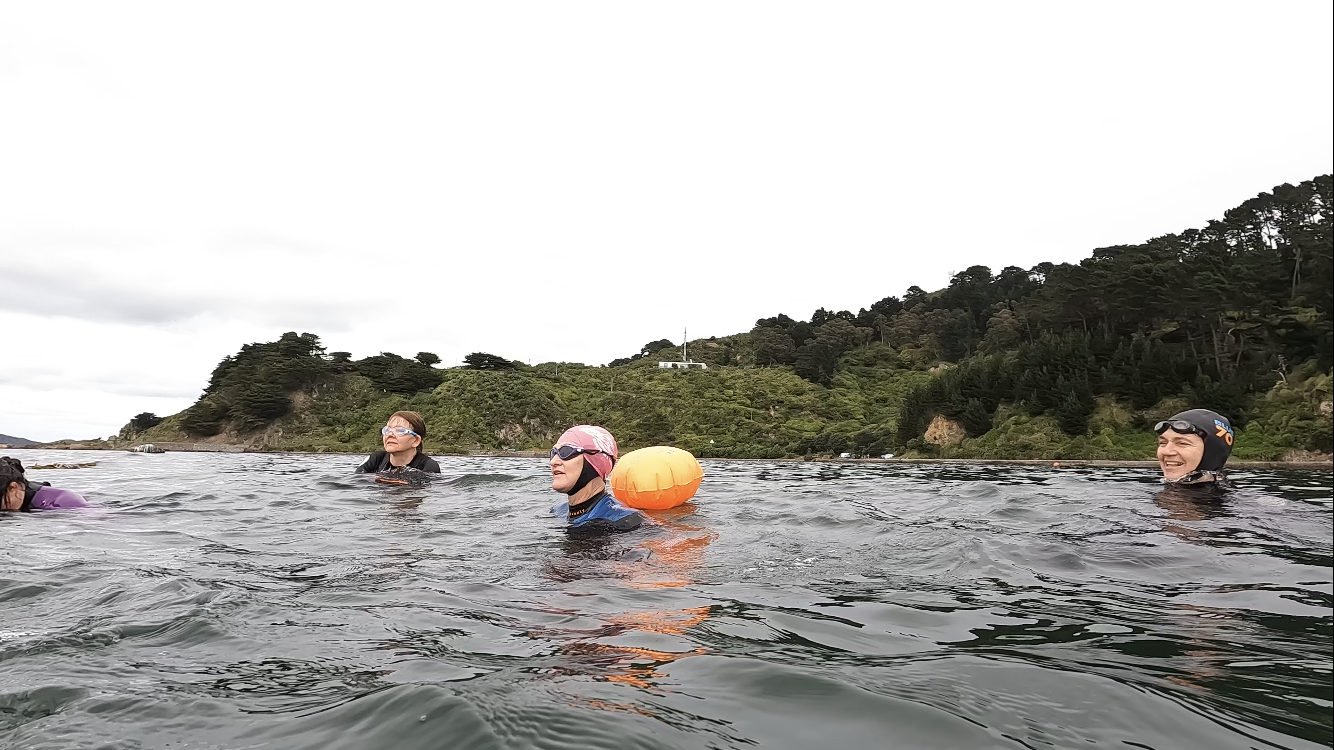
Threats to rimurimu forests:
Overfishing: "Slowly over time, it's throwing the ecosystem out of balance. [People fish for] snapper and big blue cod. And of course within the harbour, there is a limited amount of fish and so there's quite a bit of pressure."
Pollution and sedimentation: "[For example], weed killers are washed pretty quickly into the marine environment."
Climate change and warming ocean temperatures: "How is the kelp forest responding to the temperature? We could really see it with warm summers where the water temperature goes over 19°C quite a few times, and you see the kelp forest shrinking afterwards. And then when we have cool summers it's a lot better."
"We are adding up all these pressures on our seaweed forests and it's all contributing. So we now need to start doing some work and pulling these pressures back."
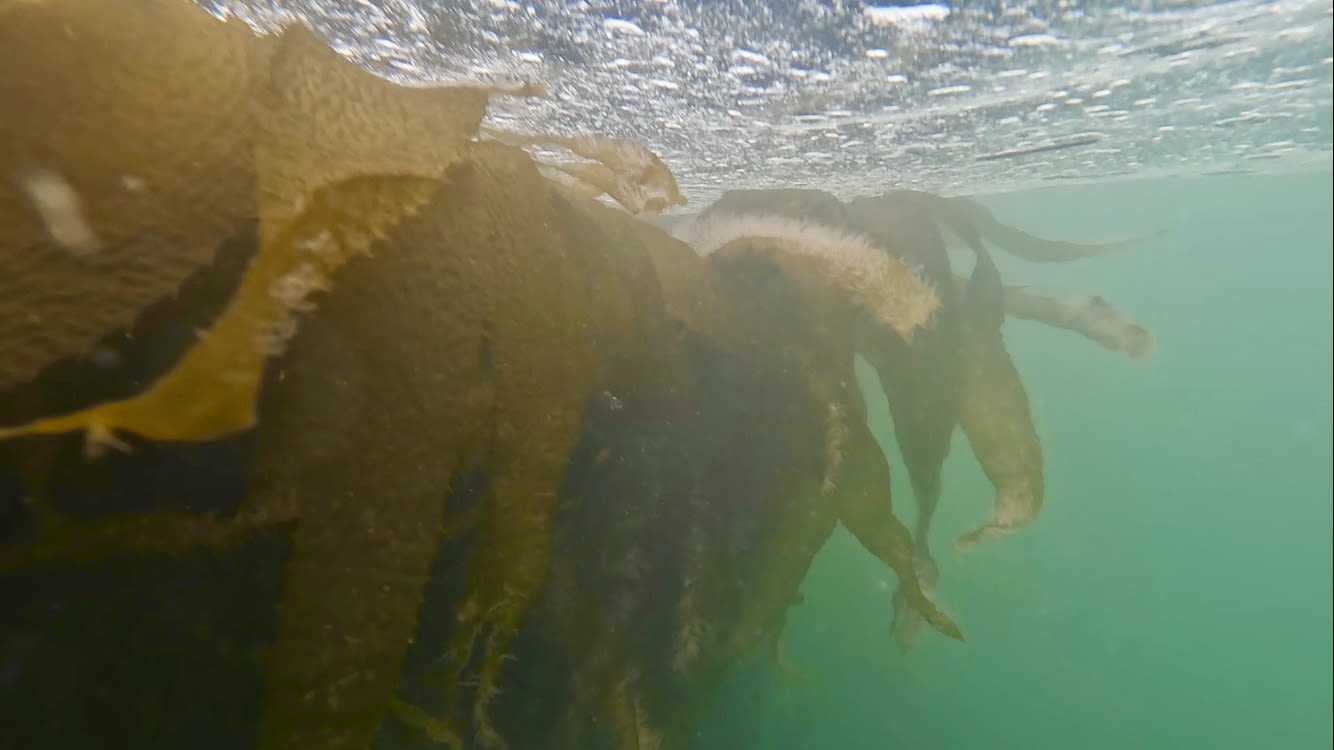
Who protects the rimurimu?
New Zealand's Exclusive Economic Zone (EEZ) gives Aotearoa the rights and obligations to an offshore marine boundary of more than four million square kilometres – that's 15 times larger than our land area. Within that boundary, oil and gas exploration, mineral prospecting and seabed mining, waste dumping, scientific research, fisheries and dredging are all regulated by the Ministry for the Environment.
But Nicole feels that much more needs to be done to protect our moana, particularly as so much of it is out of sight for most of us.
"In the marine environment, we don't always see the impact. If we saw people walking through the bush with a gun, we would hear about it all day long. There would be a huge difference because people see the impact straight away and it's more visible. But here everybody thinks, 'Oh, there's fish going to swim by in a minute' – without seeing what's being done over time. We need better fisheries management."
Overfishing is a big issue – it causes imbalances to the marine ecosystem which affects all marine life, including the kelp forests.
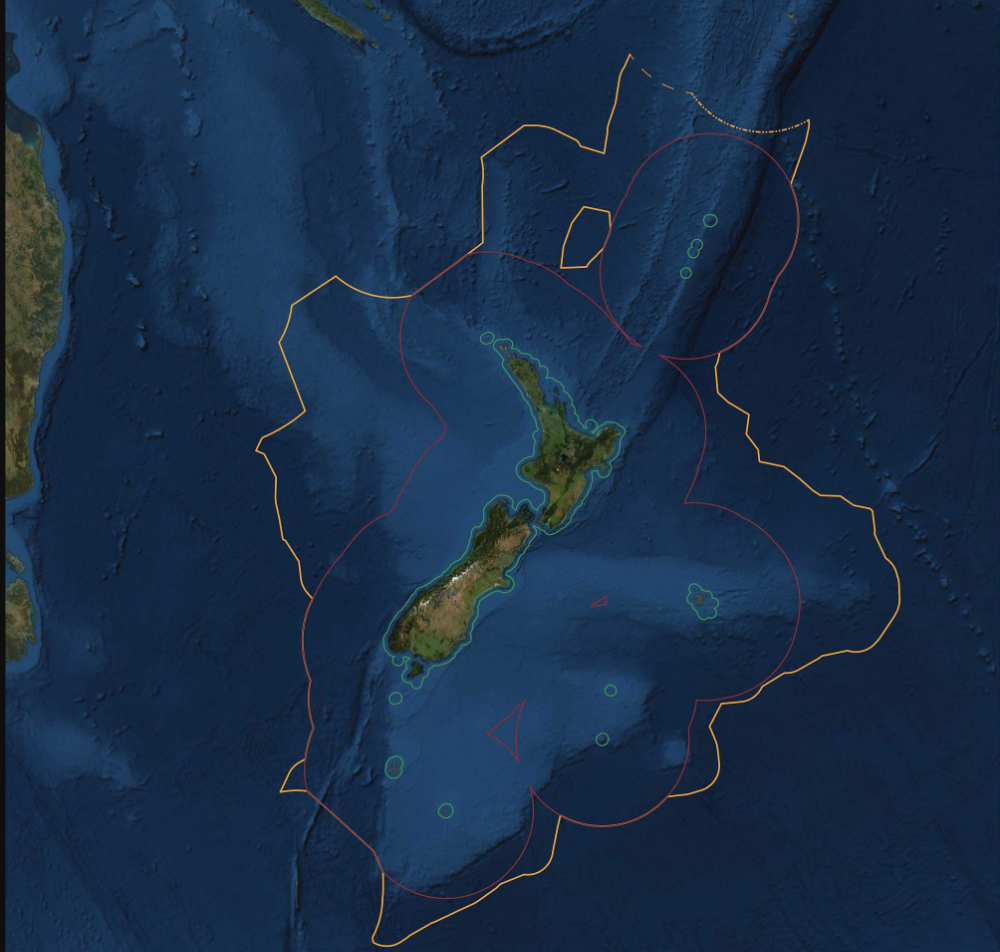
Aotearoa's EEZ (the red line) and the Continental Shelf (the orange line). Image: MBIE
Aotearoa's EEZ (the red line) and the Continental Shelf (the orange line). Image: MBIE
One of the biggest impacts on our rimurimu forests is caused by a small, round, spiky, innocuous-looking sea creature: kina.
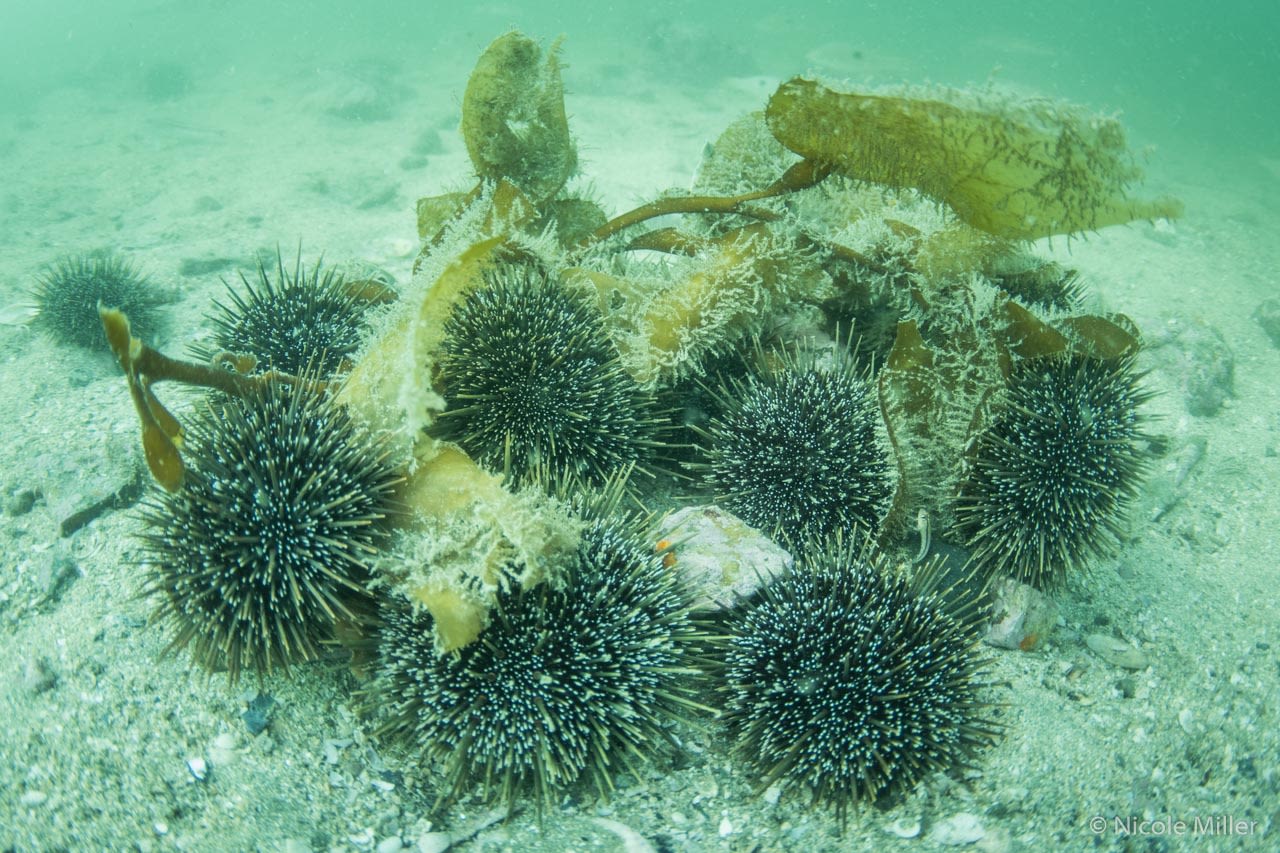
The trouble with kina (sea urchins)
A few years ago, Nicole and the other scuba divers of Wellington Underwater Club noticed that more and more kina were appearing in the shallows at Kau Bay and the kelp forest was declining.
They put down permanent markers to begin measuring the changes.
"We did a video survey between March 2021 and April 2022 and realised that within 13 months we had lost a five-metre-wide kelp forest to sea urchin grazing. So it's like a racing front."
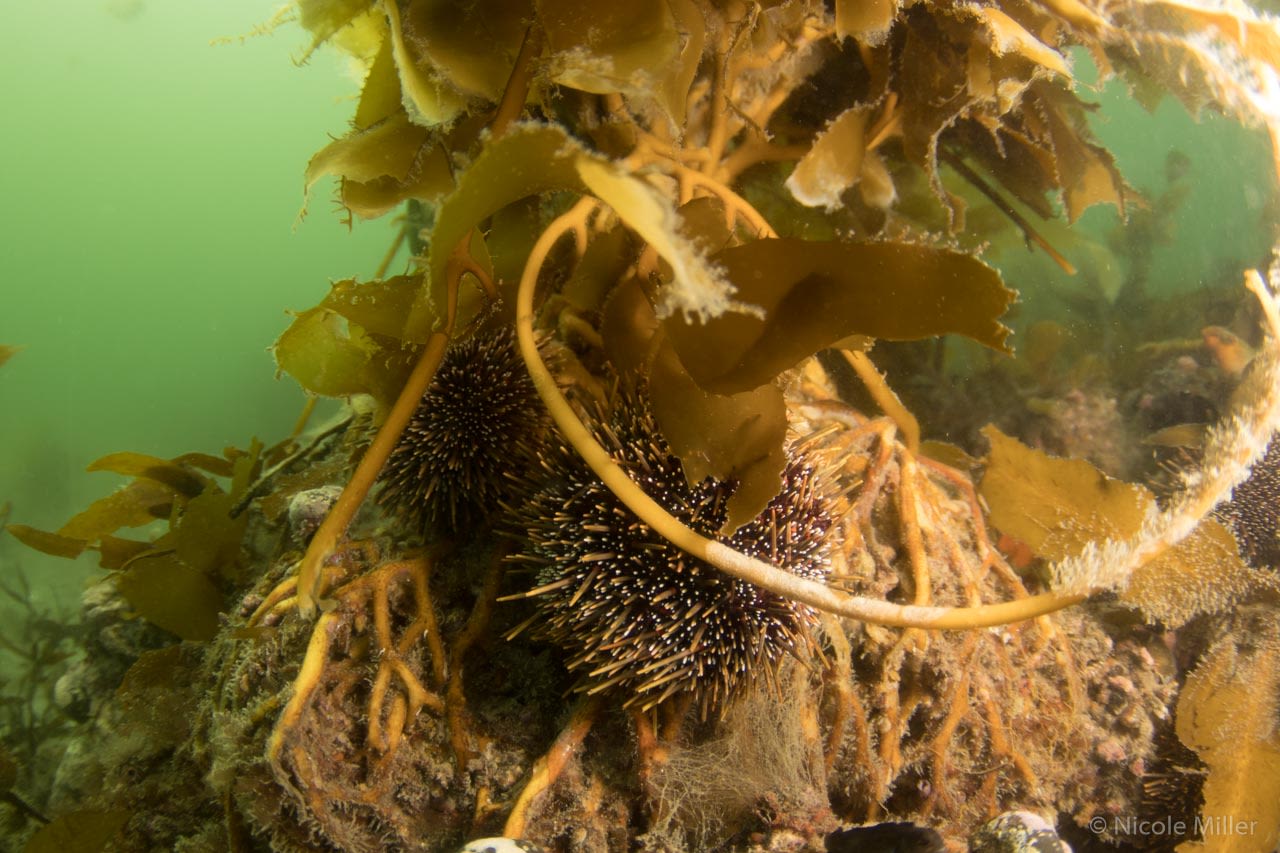
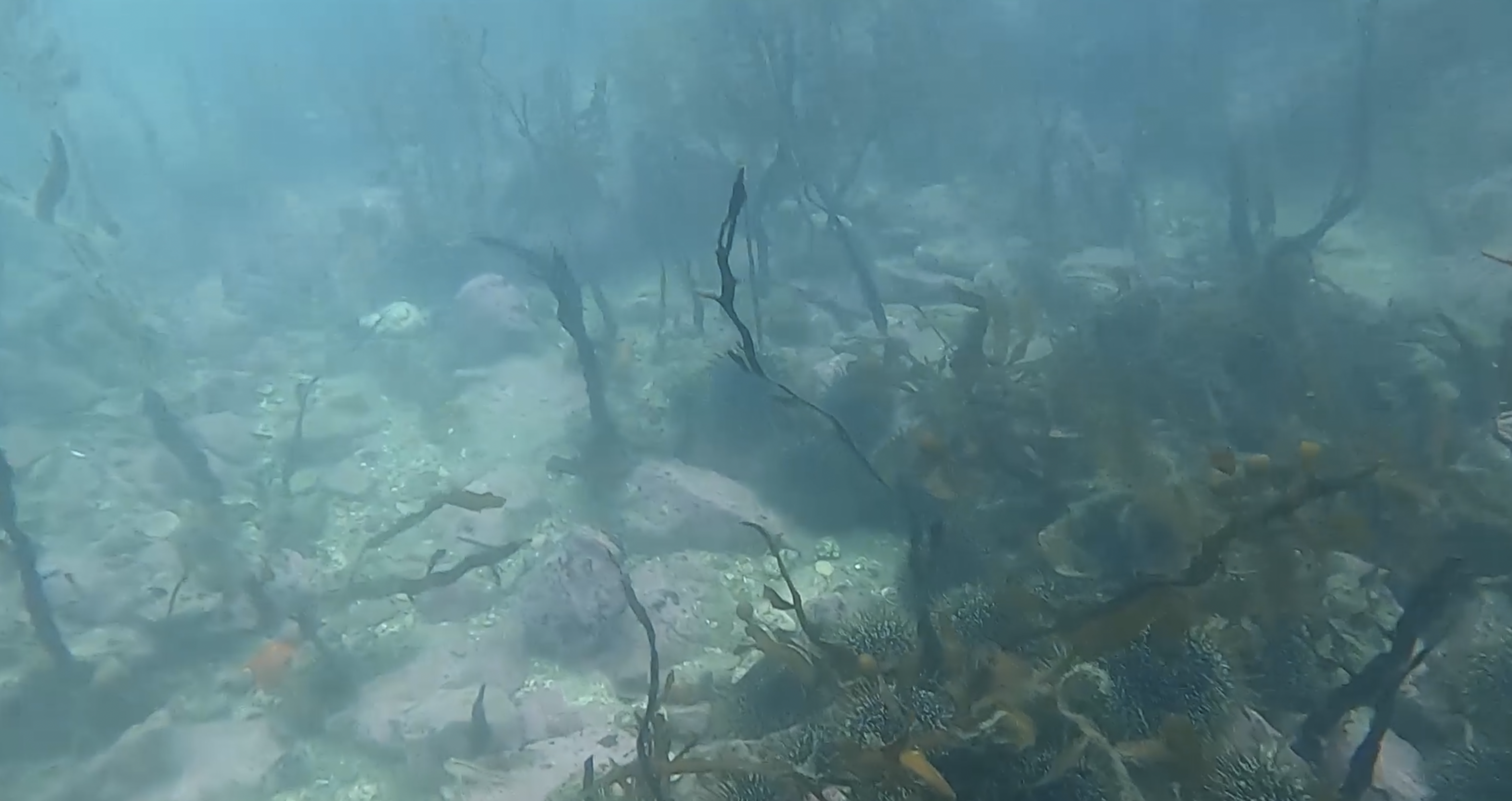
"We know that kina are a problem. The kina that are eating seaweeds are going along like lawn mowers, they're eating so much."
Kina are a normal, healthy part of the marine ecosystem; the trouble is there's currently too many of them. Wellington Underwater Club is now working with Taranaki Whānui and providing them with data of the decline. They are about to begin a research project that will stretch from Point Halswell around to Scorching Bay on the peninsula, to measure the outcome of removing kina to a point that allows the seaweed to regenerate.
Because kina are good to eat, they're hoping people will be motivated to come along and help to remove some of them.
"We've documented the decline. So, we'd really like to document the regrowth of kelp as well!"
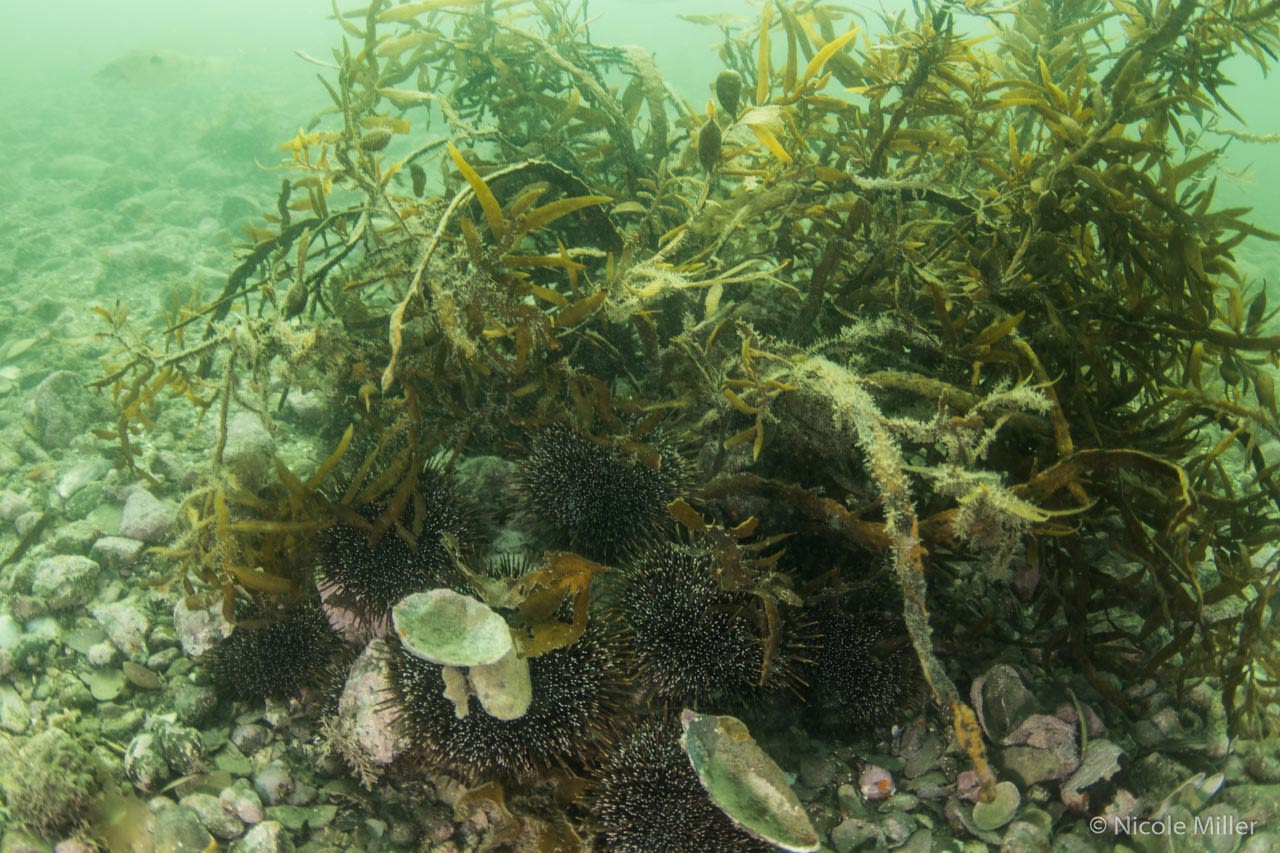
Edible seaweed (aka sea vegetables)
Nicole told us which seaweeds were edible. "We can easily grow seaweed for food. You don't have to put fertiliser on. They just grow. Most of our seaweeds are edible and some of them are really good. Karengo is a good example. It's the equivalent to nori for sushi.
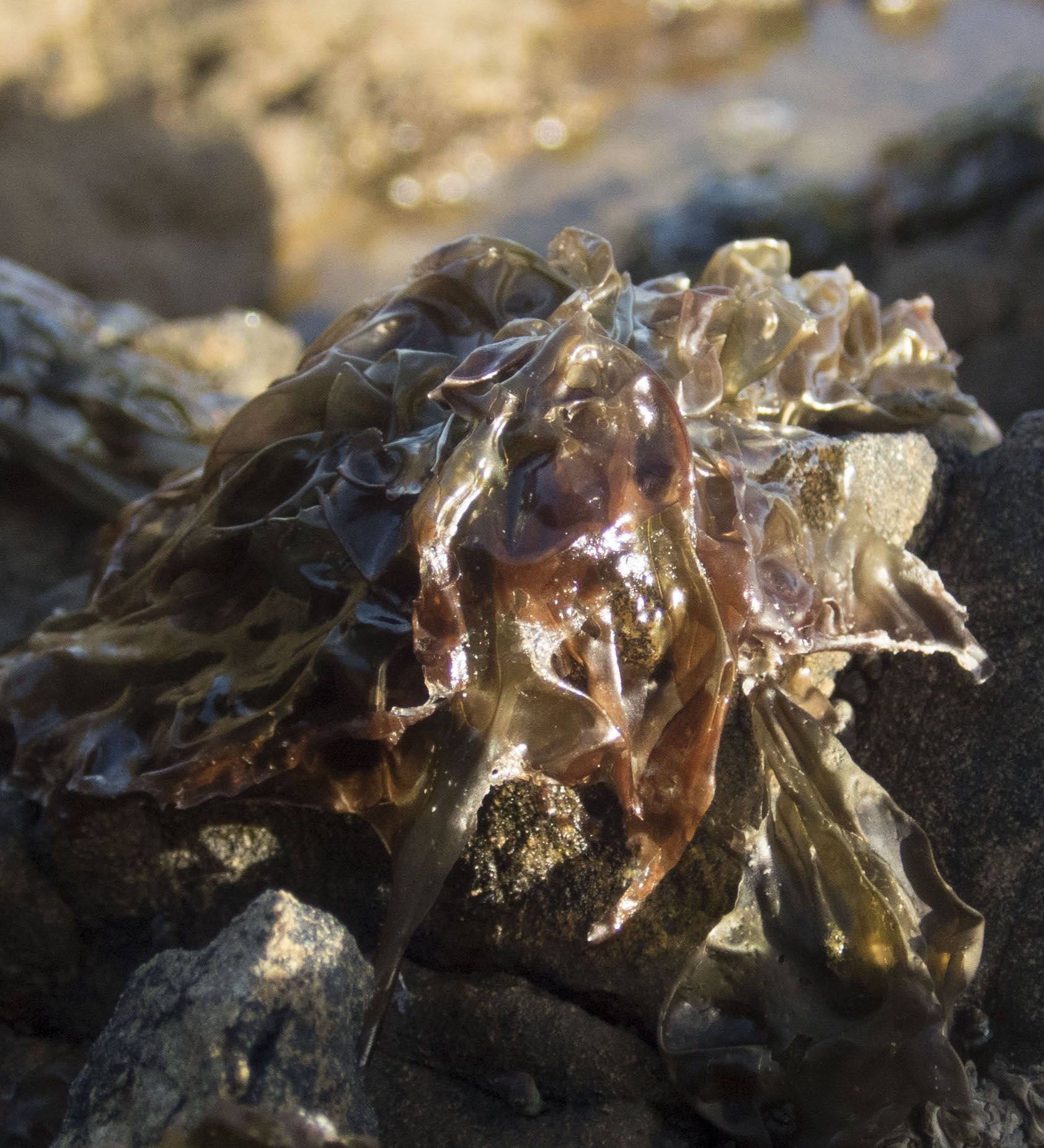
Karengo
Karengo
"We've also got giant kelp – you can buy it at the supermarket. My favourite are the sea grapes [umibudo, rimurepe]. They are just like a small polyp of seaweed. It's the size of your fingers, but tiny bubbles on it and it's like a vegan caviar. It tastes really good! Sea lettuce [rimu kaikai] is another good one.
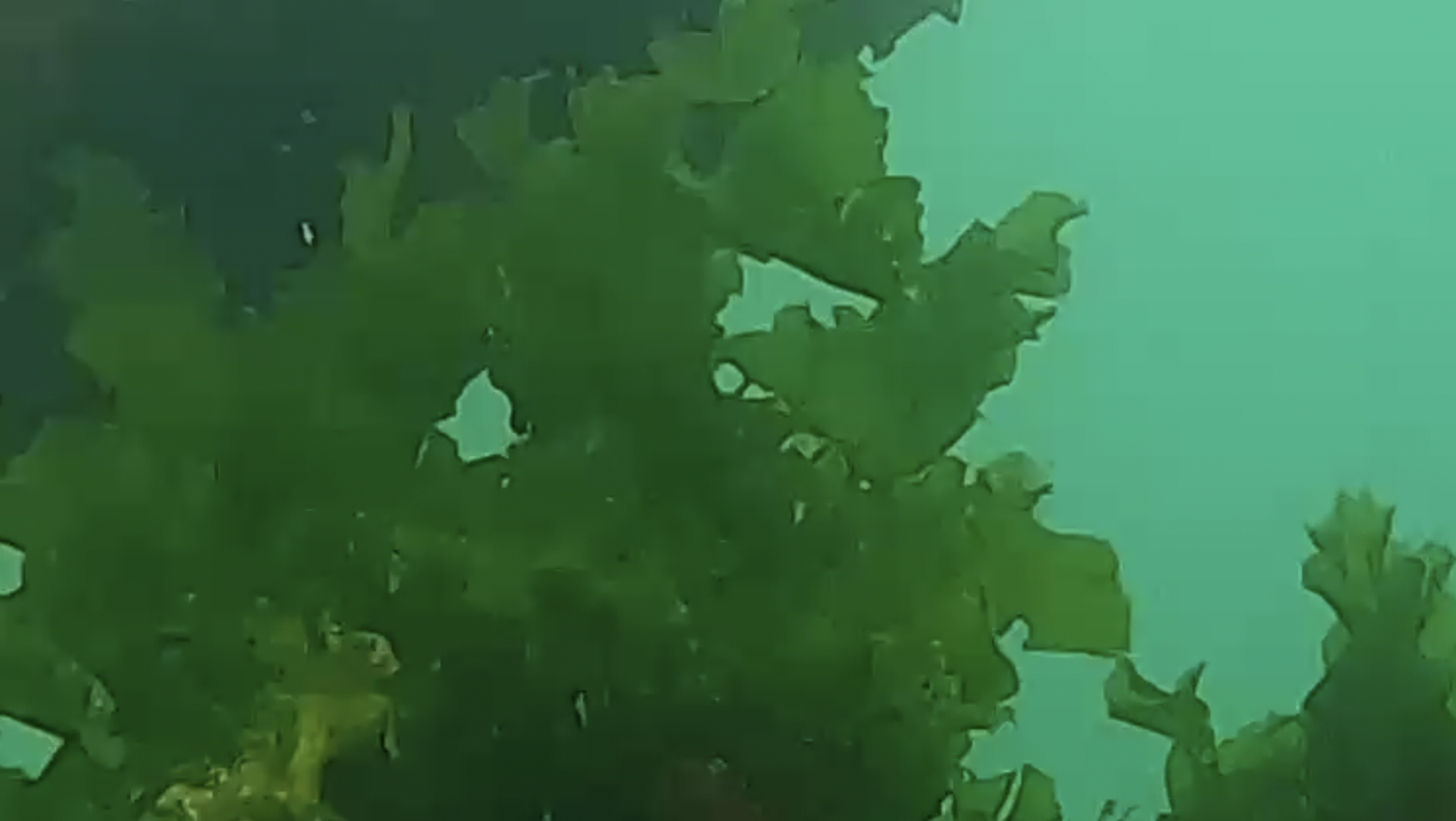
Sea lettuce
Sea lettuce
"There's undaria or wakame, a South Korean species. Unfortunately it's invasive, but we have it here already. Part of having a farm is learning how to manage it.
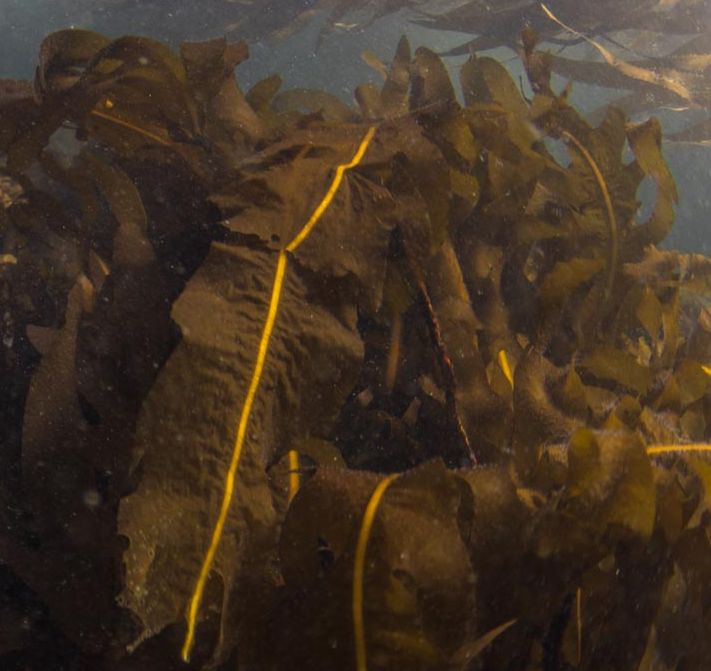
Undaria
Undaria
"So there's an opportunity to grow local food and to do it right here [at the farm]. If we grow our native species, then it helps with regeneration. There are also commercial opportunities –we can put them into restaurants."
Nicole picked a blade of giant kelp and we all had a nibble after our swim. Sinéad also brought along seaweed muffins she'd baked.

Virtual sea-ality
Nicole brought along her VR headset so we could each have a go 'diving' through the underwater forests at Taputeranga Marine Reserve, an 8 km² protected area on the south coast. Virtual reality is a great way to let people experience the marine environment without getting in the water. Once you put on the headset, all you can see is a 3D video simulation of the reserve from a diver's perspective, surrounded by shimmering blue water, lush kelp, darting fish, large pāua and lobsters.
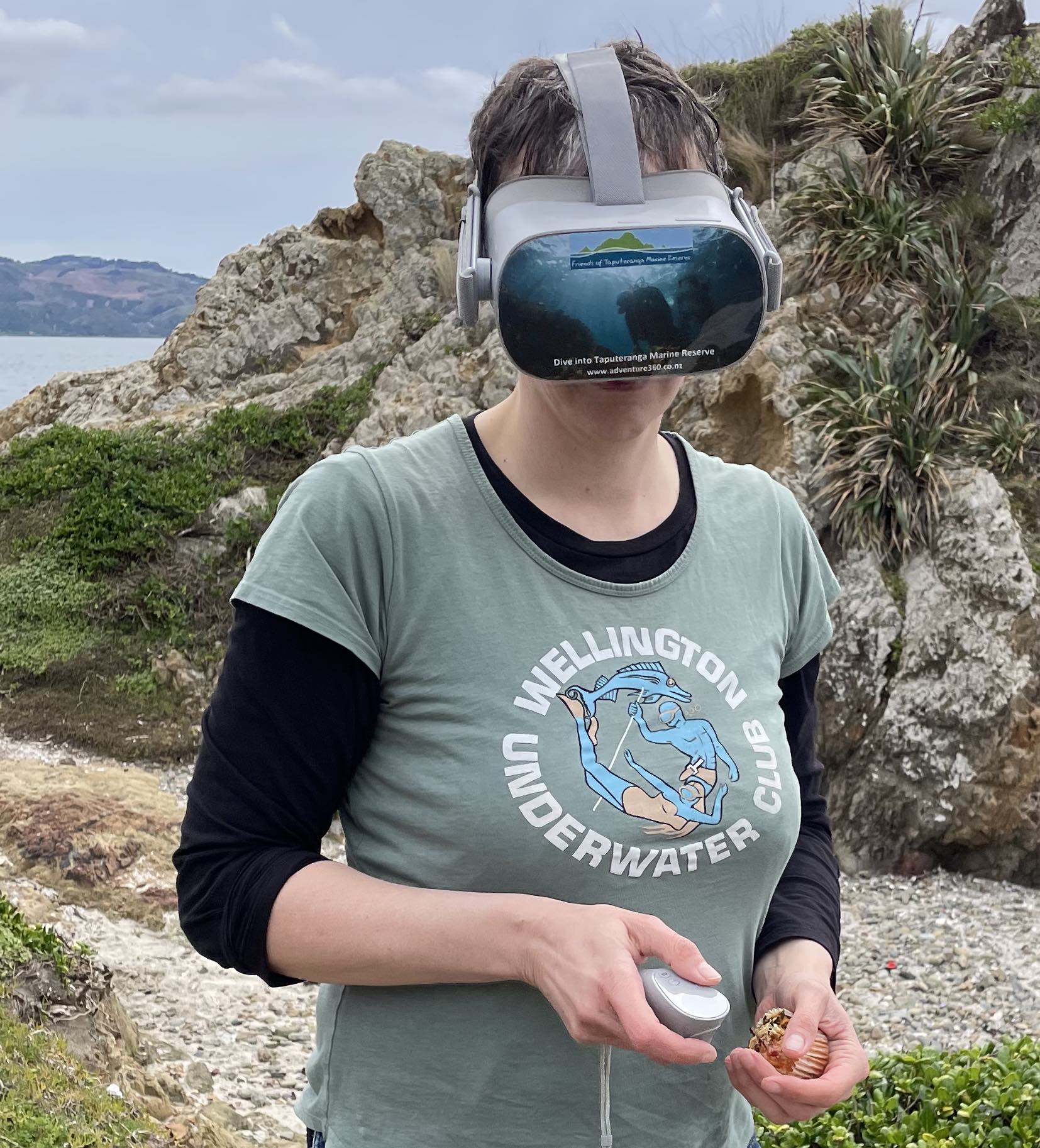
As Chair of the Friends of Taputeranga Marine Reserve Charitable Trust, Nicole is particularly passionate about this protected part of Wellington's coastline. "I love the marine reserve so much. It's a beacon of hope and just a really, really good example of what happens if we actually stop extracting out of one area. It bounces back and it's much more resilient."
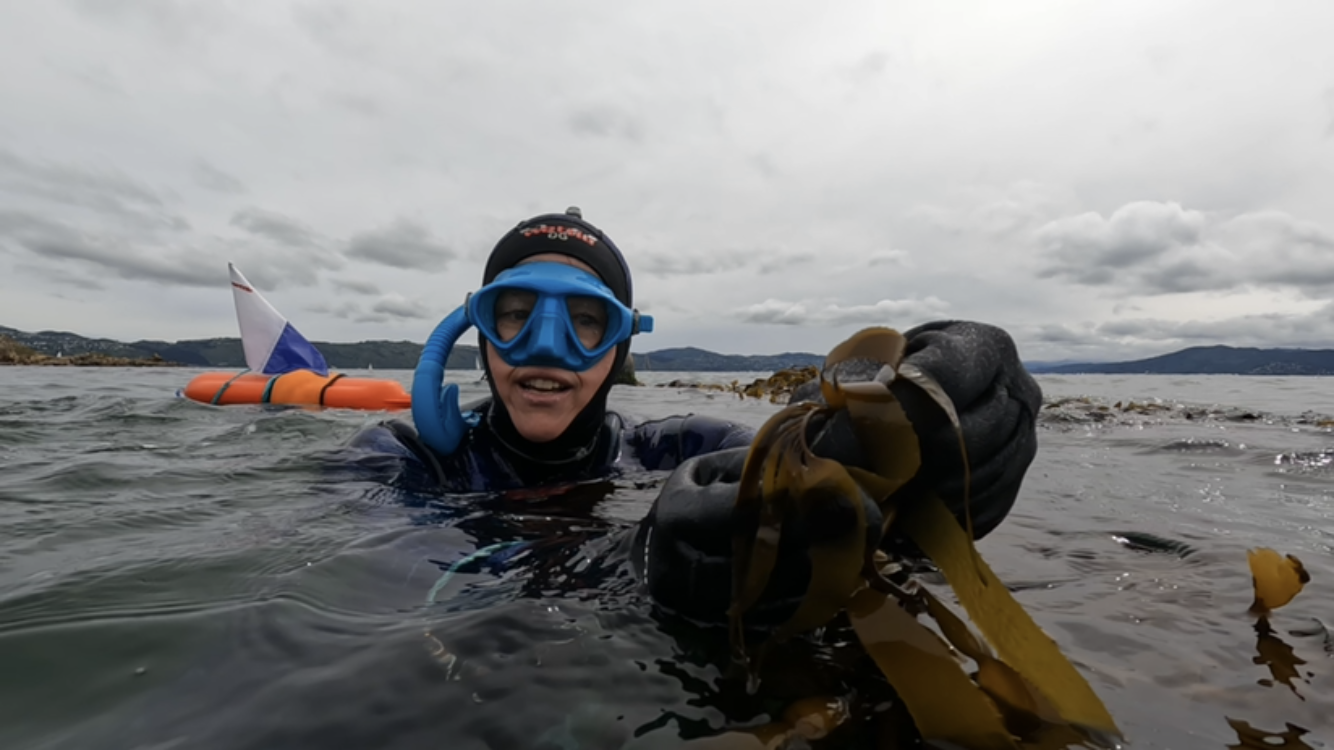
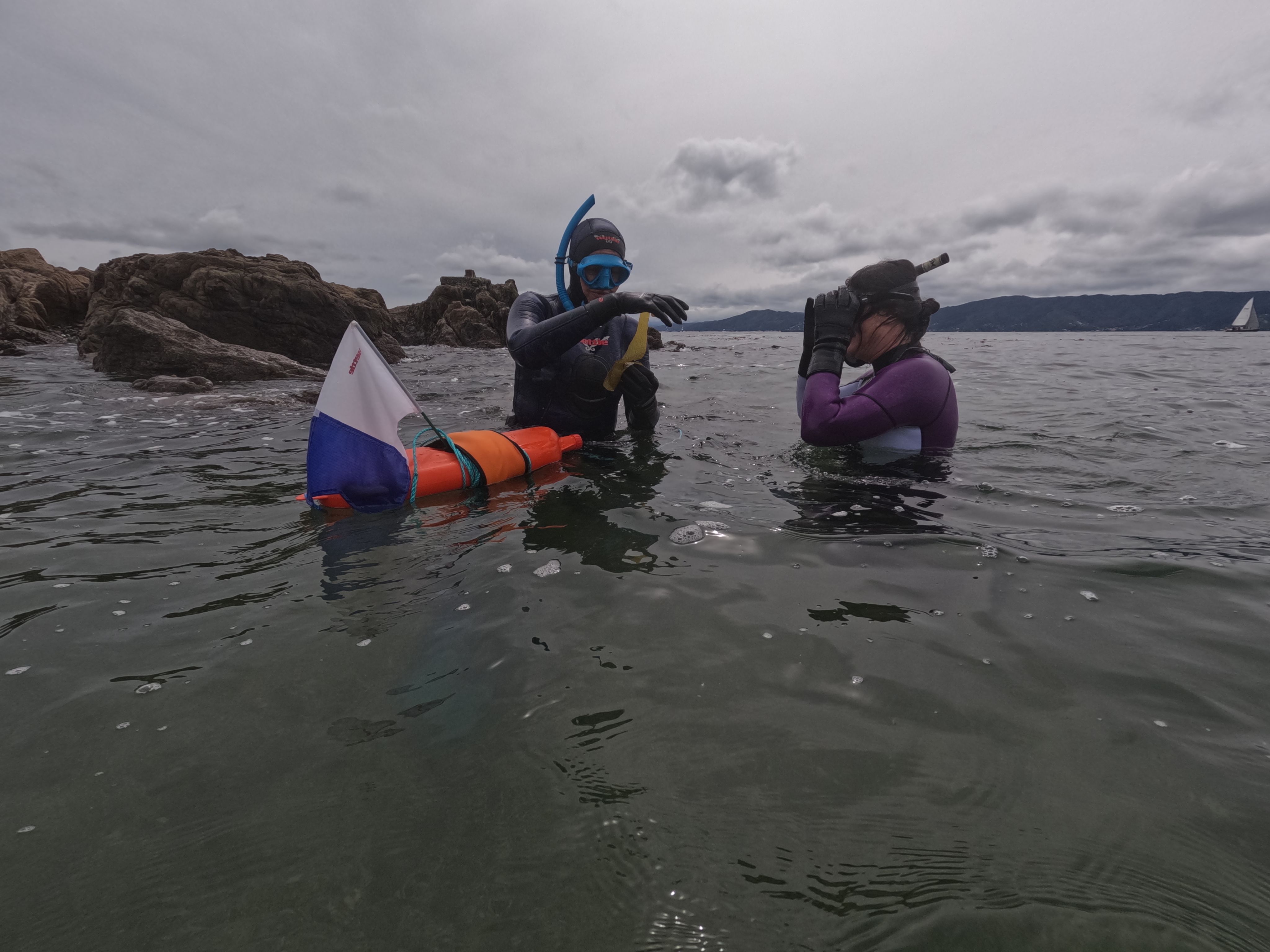
"We need to have places where the ocean can regenerate."
After we'd swum out to the seaweed farm, I spent a few minutes dipping underwater to film the wild kelp growing by the shoreline. Submerging below the glassy blue surface of the sea, listening to the thick underwater vibrations, and feeling tiny bubbles on my outstretched hands. Enveloped by the cold water. Watching the dancing fronds, with a sense of being suspended in time.
This area was a special place to visit: an underwater world that most people don't get to see, even if they regularly walk or drive past it along the coast.
Want to know what it sounded like underwater? Have a listen!
This story was created to give you a sense of visiting the seaweed site and explain the threats to our local rimurimu forests. It was designed to be shared, so please use the social buttons at the top of the page or copy this link to spread the word about our precious marine life.

To learn more and get involved:
- Love Rimurimu
- The Kina Removal Project
- Wellington Underwater Club (Facebook page)
- Mountains to Sea Wellington
- Taputeranga Marine Reserve
With special thanks to Nicole Miller for sharing her time, knowledge, photos and videos; staff and students at the Centre for Science in Society (VUW) for their guidance and encouragement; Anne Taylor for sharing her beautiful drawings; Katherine Hurst for helping at the event and taking photos; and the Wāhine Wai swimmers for their companionship and sense of adventure!
About me:
I'm Shona Riddell, a writer and Master's student at Victoria University of Wellington. I'm a keen ocean swimmer and created this project to share information about the rimurimu (seaweed) forests and marine life in Te Whanganui-a-Tara, Wellington Harbour, through swimming and multimedia. shonariddell.com
